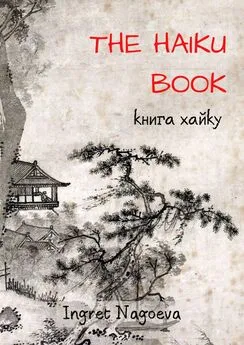Daniel Ingram - Mastering the Core Teachings of Buddha - An Unusually Hardcore Dharma Book
- Название:Mastering the Core Teachings of Buddha - An Unusually Hardcore Dharma Book
- Автор:
- Жанр:
- Издательство:Aeon Books
- Год:2009
- ISBN:9781904658405
- Рейтинг:
- Избранное:Добавить в избранное
-
Отзывы:
-
Ваша оценка:
Daniel Ingram - Mastering the Core Teachings of Buddha - An Unusually Hardcore Dharma Book краткое содержание
Mastering the Core Teachings of Buddha - An Unusually Hardcore Dharma Book - читать онлайн бесплатно полную версию (весь текст целиком)
Интервал:
Закладка:
uddhimagga , a 5th
Century text by Buddhaghosa, also does a nice treatment of these stages, and contains some interesting and hard to find information. It focuses largely on the emotional side-effects and thus misses many useful points.
Another good but brief map appears in Ven. Khenpo Karthar
Rinpoche’s Dharma Paths. You could also check out Bhante
167
The Progress of Insight
Gunaratana’s The Path of Serenity and Insight if you would like to know the dogma well. It is a thorough and scholarly work.
Matthew Flickstein’s Swallowing the River Ganges is a light
treatment of basic Buddhist concepts and contains a very superficial treatment of the stages of insight. It is kind of like what would happen if you condensed a medical school textbook down to a 5th grade science text. It focuses almost entirely on the emotional side effects and thus misses a huge amount that is worthy of discussion, but it comes from a good place and is harmless enough. It doesn’t add anything to the above sources but is easy to read.
There are many less accessible maps of insight as well. The Tibetan Book of the Dead
, Li
beration Through Hearing in the Bardo requires
some prior familiarity with this territory to sort out the wild symbolic imagery. A 12th Century Sufi map is given in Journey to the Lord of Power by Ibn 'Arabi, but again the medieval symbolism is somewhat hard to untangle unless you are already personally familiar with these stages. It also provides a very interesting if quite cryptic description of the higher stages of realization. St. John of the Cross’ The Dark Night of The
Soul does a good job of dealing with the most difficult of the insight stages. His map is called The Ladder of Love. Unfortunately, the translation of the medieval Spanish and thickness of complex Catholic dogma make it a fairly inaccessible.
I strongly recommend that you consult some of these other sources, particularly the first five mentioned. While I consider the treatment of the stages of insight that follows shortly to be by far the most comprehensive and practical explanation of the stages of insight ever written, and I mean that honestly, there are still lots of great points made in those books, and you should check them out. There is a huge amount of valuable information left out in all of these sources, perhaps due to the Mushroom Factor, but perhaps due to some of the
difficulties in describing all the little nuances of the subject in all its possible variations. Thus, working with a teacher who has personal mastery of these stages (regardless of what they call them) is an extremely good idea most of the time.
The model terminology I am using is from the ancient
commentaries on the Pali Canon of the Theravada tradition. This 168
The Progress of Insight
model is used mostly in Burma but is also used to some degree in the other Theravada traditions. Zen is quite aware of these stages, as all Zen Masters had to go through them and continue to do so, but they tend not to name them or talk about them, as is their typical style. This can be helpful, as people can get all obsessed with these maps, turning them into a new form of useless content and a source of imprisoning identification and competition. This is the ugly shadow side of goal-oriented or map-based practice, but it often (though not always) may be overcome with honest awareness of this fact.
Luckily, if the meditator really is into insight territory, continued correct practice has a way of unsticking them given time. Also, when the proverbial stuff is hitting the fan, having a map around can really help the meditator not make too many of the common and tempting
mistakes of that stage, as well as provide the meditator with faith that that they are on the right track when they hit the hard or weird stages.
These stages can significantly color or skew a meditator’s view of their life until they master them, and it can be very helpful to remember this when trying to navigate this territory and keep one’s job and relationships functioning. Those who do not have the benefit of the maps in these situations or who choose to ignore them are much more easily blindsided by the psychological extremes and challenges which may sometimes accompany stages such as The Arising and Passing Away and those of The Dark Night.
While many people don’t want to know the maps for various
reasons (such as their own unexamined insecurities), I suspect that many more people could get a lot farther in their practice if they did know them. At their very least, the maps clearly demonstrate that there is vastly more to all this than just philosophy or psychology. They also clearly and unambiguously point to how the game is played step by step and stage by stage, what one is looking for and more importantly why, and give guidelines for how to avoid screwing up along the way. Why people wouldn’t want to know these things is completely beyond me.
They fill in the juicy details of the seemingly vast gap from doing some seemingly boring and simple practice to getting enlightened.
Further, providing all of this extremely precise information on exactly what to do puts the responsibility for progress or a lack thereof clearly 169
The Progress of Insight
on the meditator (e.g. you), which is exactly where it should be. If after reading this book you don’t put this extremely powerful information into practice, the fault is your own.
There is considerable evidence that the lack of this information in insight traditions that don’t use the maps has been one of the primary obstacles to progress. On the other hand, the maps can sometimes cause furious competition and arrogance in the traditions that do use them, as well as harmful fixation on purely future-oriented goals. Please, do your very best to avoid these sorts of problems.
The more intense, consistent and precise the practice, the easier it is to see how the maps apply. The more energy, focus and consistency is put into practice, the more dramatic and even outrageous these stages can be. If these stages unfold over long periods of time and gently, it can be more difficult to see the progression through them, though it does happen regardless. Certain emphases in practice, such as Mahasi Sayadaw style “noting” practice, particularly on intensive retreats, seem to produce a clearer appreciation of the maps, and some individuals will have an easier time seeing how these maps apply than others will.
Each stage is marked by very specific increases in our perceptual abilities. The basic areas we can improve in are clarity, precision, speed, consistency, inclusiveness and acceptance. It is these improvements in our perceptual abilities that are the hallmarks of each stage and the gold standard by which they are defined and known. Each stage also tends to bring up mental and physical raptures (unusual manifestations). These are fairly predictable at each stage and sometimes very unique to each stage. They are secondary to the increase in perceptual thresholds of ways by which we may judge whether or not we are in a particular stage.
Each stage also tends to bring up specific aspects of our emotional and psychological makeup. These are also strangely predictable, but these are not as reliable for determining which stage is occurring. They are suggestible, ordinary, and will show more variation from person to person. However, when used in conjunction with the changes in perceptual threshold and the raptures, they can help us get a clearer sense of which stage has been attained. Further, these stages occur in a very predictable order, and so looking for a pattern of stages leading one to the next can help us get a sense of what is going on. Thus, when 170
The Progress of Insight
reading my descriptions of these stages, pay attention to these separate aspects: the shift in perceptual threshold, the physical and mental raptures, the emotional and psychological tendencies, and the overall pattern of how that stage fits with the rest.
So, the meditator sits down (or lies down, stands, etc.) and begins to try to experience each and every sensation clearly as it is. When the meditator gains enough concentration to steady the mind on the object of meditation, something called “access concentration,” they may enter the first jhana, now called the “first vipassana jhana,” which is in some ways the same for both concentration practice and insight practice at the beginning. However, as they have been practicing insight meditation, they are not trying to solidify this state, but are trying to penetrate the three illusions by understanding the Three Characteristics.
They have been trying to sort out with mindfulness what is body and what is mind and when each is and isn’t there. They have been trying to be clear about the actual sensations that make up their world just as they are. They have been trying to directly understand the Three
Characteristics moment to moment in whatever sensations arise, be it in a restricted area of space, such as the area of the sensations of breathing, a moving area of space (e.g. body-scanning practices), in the whole of their world as is done in choiceless awareness practices, using some other technique or object, or just by being alive and paying attention.
Thus, this first stage has a different quality to it from that of concentration practice, and they attain to direct and clear perception of the first knowledge of...
1. MIND AND BODY
There is this sudden shift, and mental phenomena shift out away from the illusory sense of “the watcher” and are just out there in the world with the sensations of the other five sense doors. This is an important insight, as it shows us clearly and directly that we are not
“our” mind or “our” body. It is also a really nice, clear and unitive-feeling state (it really is still more state-like than stage-like), and people can try to hold on to it just as with the first jhana and get stuck. Reality can seem just a bit more brilliant the first time one chances into Mind and Body. We may feel more alive and connected to the world.
171
The Progress of Insight
With the sensate experience of both mental and physical
phenomena being clearly observable, the relationships and interactions between the two begin to become obvious. What is meant by “the dualistic split” is very obvious during this first stage.
Somewhere around the first stage, either just before it or shortly after it, there may arise odd jaw pains on one side, throat tensions, and some other such unpleasant physical occurrences. Regardless, it soon becomes easy to see that each sensation is followed by the crude mental impression of it, and that intentions precede actions and thoughts (see the discussion of impermanence in Part I, The Three Characteristics).
Thus, we come to...
2. CAUSE AND EFFECT
In this stage, the relationships between mental and physical phenomena become very clear and sometimes ratchet-like. The joy and wonder of Mind and Body have left, and now the interactions between the mind and body become somewhat mechanical seeming. Motions such as walking or the breath may begin to get jerky, as there is the intention and the motion, the sensation and the mental impression of it, the cause and the effect, all occurring in a way which can seem sort of tight and robot-like. You note, the breath moves just a bit. You stop noting, the breath stops. You note quickly, the breath jerks quickly. You note slowly, the breath follows. Some will stop noting quickly or stop noting at all, thinking that they are messing up the breath. The advice here is as before: note quickly, and don’t worry about what the breath does.
Читать дальшеИнтервал:
Закладка:





![Дженнифер Гюнтер - The vagina book. Главная книга для тех, у кого есть этот орган [litres]](/books/1061538/dzhennifer-gyunter-the-vagina-book-glavnaya-kniga-dl.webp)




